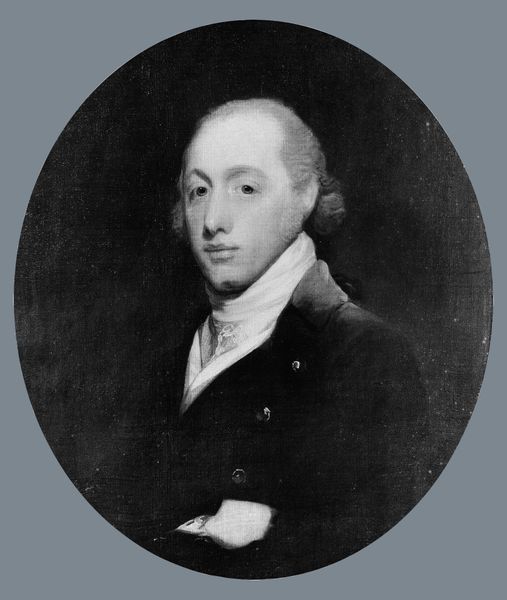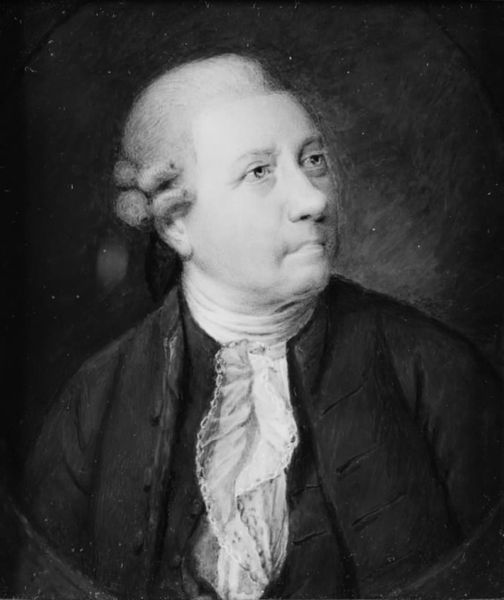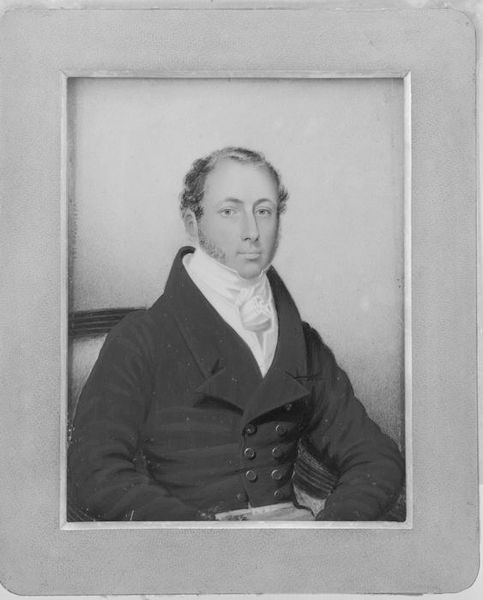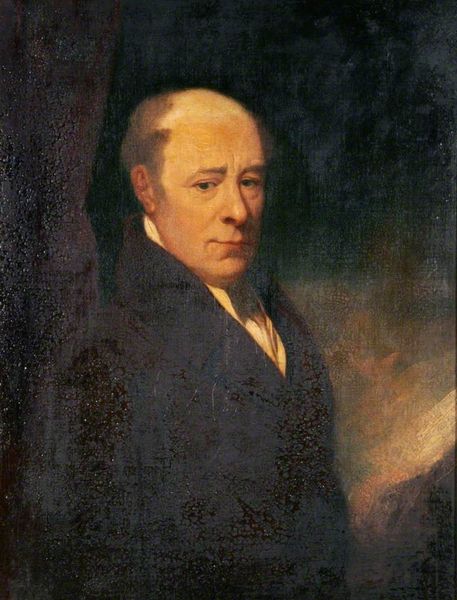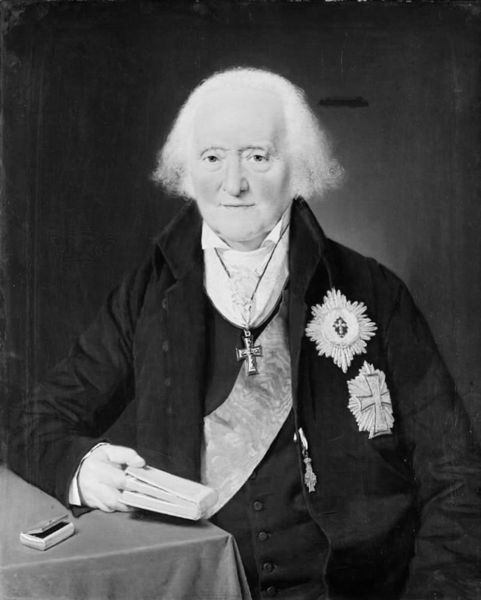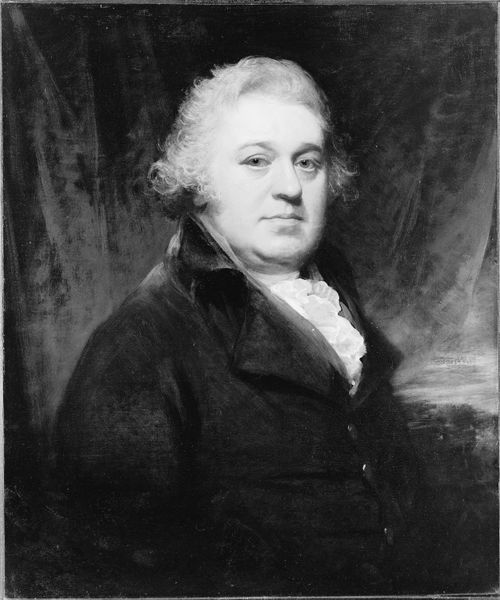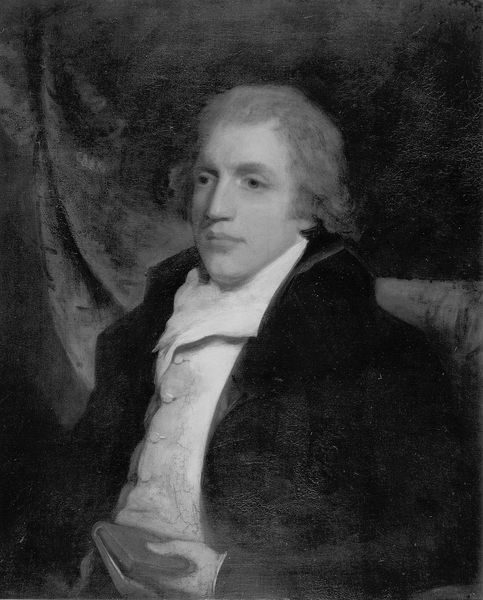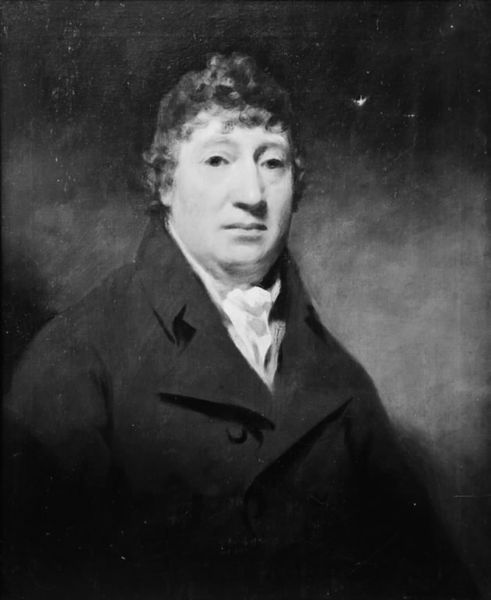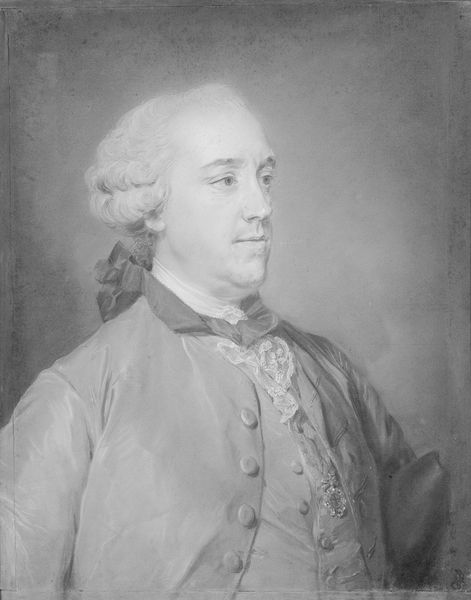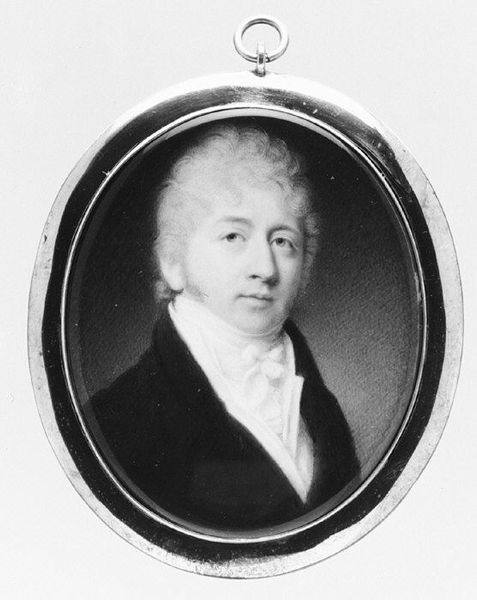
drawing, pencil, ivory
#
portrait
#
drawing
#
self-portrait
#
portrait
#
form
#
pencil
#
line
#
ivory
#
realism
Dimensions: 15.2 cm (height) x 11.4 cm (width) (Netto)
Curator: Before us is "Herreportræt," or "Portrait of a Gentleman," completed in 1802. This delicate piece, held in the collection of the Statens Museum for Kunst, is a drawing executed in pencil on ivory, and believed to be a self-portrait. Editor: There's something incredibly immediate about the gaze in this portrait. The artist has created such detailed character in only a few colors; notice especially the buttons on his dark coat in stark contrast with his face and white hair. The whole composition emanates with a somewhat muted yet respectable persona. Curator: Indeed. The muted palette resonates with the social and political climate of the time, reflecting the prevailing artistic preference for understated elegance that stood in contrast to the preceding flamboyance associated with aristocracy during an age of revolutions. We are getting at his societal context. Editor: I agree; if one really analyzes his sartorial elegance through line and design, it is very easy to get caught up in a series of geometric, repetitive observations. I can see how the artist draws the eyes with such simple structural techniques! Curator: It’s intriguing to consider the act of self-representation itself during this era, particularly for artists navigating changing social structures and power dynamics. The question becomes, is the piece performative, a construction meant to broadcast an idealized view of his class or, is he striving to represent himself "authentically"? Editor: Regardless of the question of authenticity, the piece clearly possesses elements of "Realism," if one considers brushstrokes, application, et cetera. Curator: Right, yet these touches exist within a carefully crafted visual vocabulary informed by the intersection of art, selfhood, and politics within his life, and the larger framework of late 18th and early 19th century Europe. It all informs the context! Editor: Seeing beyond historical factors helps in seeing beyond what it signifies as art—or what kind of subject it seems to be about—and instead to understanding its structure and qualities as something designed for purely artistic merit. Curator: Both avenues deepen the artwork. Understanding these contexts is how we recognize his visual and ideological influences in contemporary culture. Editor: Well, however one appreciates the artwork, it is still quite an achievement of artistic composition.
Comments
No comments
Be the first to comment and join the conversation on the ultimate creative platform.
